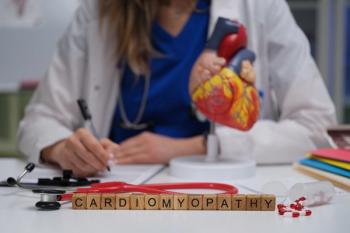
- June 2014 Women's Health
- Volume 80
- Issue 6
New Treatment Approach in Lipid Management: 2013 ACC/AHA Guideline on the Treatment of Blood Cholesterol to Reduce Atherosclerotic Cardiovascular Risk in Adults
This article was sponsored by AstraZeneca Pharmaceuticals.
The cholesterol treatment guideline recently published by the American College of Cardiology (ACC) and the American Heart Association (AHA) shifts the emphasis away from the long-standing “treat-to-target” approach toward one that is patient-centered—based on each person’s cardiovascular risk. The new guideline emphasizes the use of maximal-intensity statin monotherapy, as clinically tolerated, to reduce the overall risk for cardiovascular events in adults.1 When counseling patients, pharmacists should be familiar with the updated guideline and the rationale behind its alternative treatment approach.
Overall Treatment Recommendations
The expert panel limited its evidence review to randomized controlled trials (RCTs), systematic reviews, and meta-analyses of RCTs that had atherosclerotic cardiovascular disease (ASCVD) outcomes. The panel found that the highest quality evidence supported using the maximum tolerated statin intensity in primary and secondary prevention of ASCVD. The evidence of ASCVD event reduction was not as strong with other lipid-lowering therapies. The evidence showed that the emphasis should be placed on the degree of low-density lipoprotein cholesterol (LDL-C) lowering rather than meeting a particular target level. Statins shown to lower LDL-C by at least 50% were classified as high intensity, and those shown to lower LDL-C by more than 30% but less than 50% were classified as moderate intensity.1
The panelists identified 4 patient groups that are most likely to benefit from statin therapy (Figure).1 High-intensity statin therapy was recommended for secondary prevention in patients who are 21 to 75 years of age and have clinical ASCVD (defined as having a history of acute coronary syndrome, myocardial infarction, stable or unstable angina, coronary or other arterial revascularization, stroke or transient ischemic attack, or peripheral arterial disease presumed to be of atherosclerotic origin). In primary prevention, the recommendations were based on age, LDL-C level, the presence or absence of diabetes, and a patient’s 10-year risk for ASCVD. A risk estimator was published as a companion tool to the guideline that bases an individual’s 10-year and lifetime risk for ASCVD on several factors (Table).2
Rationale for Recommendations
The panel noted that the updates to the guideline were based on the highest quality evidence available from RCTs and focused on treatment of blood cholesterol to reduce the risk of ASCVD. The strongest evidence for primary and secondary prevention of ASCVD was found in statin RCTs. Although many non-statin cholesterol-lowering therapies have been approved and studied in the past 10 years, outcomes data showing reductions in ASCVD events are lacking for other lipid-lowering agents added on to statin therapy.1
Members of the expert panel cited several reasons for abandoning the treat-to-target approach. The panel found that specific targets advocated by the 2004 guidelines were not evidence-based and did not take into account the complexities inherent in a risk versus benefit assessment for individual patients. There are no data that strongly support or refute the use of one LDL-C target versus another in terms of lowering the risk for ASCVD. Also, the studies examining add-on therapies in hypercholesterolemia did not show additional ASCVD event reduction and did not account for the potential adverse events associated with multidrug regimens needed to reach a specific goal.1
Role of the Pharmacist
The new ACC/AHA guideline fosters the importance of dialogue between the patient and the health care provider. During counseling, pharmacists may be asked for more information about the guideline’s recommendations and about statin therapy. When discussing the guideline with patients, many of whom are accustomed to focusing on reaching a specific treatment target, it is important to explain the rationale behind the new patient-centered treatment approach. The guideline supports using the maximum tolerated statin intensity in the groups shown to benefit and does not recommend treating to any particular LDL-C target. LDL-C levels are expected to be reduced by 50% or more with high-intensity statins and 30% to 50% with moderate-intensity statins.1
Among the 4 groups of patients who are candidates for statins, the guideline states that the benefits of therapy outweigh the risk of adverse events. Patients should be instructed to consult their physician if they experience muscle symptoms such as pain, weakness, or fatigue. The guideline also recommends the use of moderate-intensity statins in patients who are candidates for high-intensity statins but have characteristics predisposing them to statin-associated adverse events (eg, multiple or serious comorbidities, history of statin intolerance, history of muscle disorders, unexplained elevations in transaminase level greater than 3 times the upper limit of normal, concomitant use of drugs that may affect statin metabolism, history of hemorrhagic stroke, >75 years of age, Asian ancestry).1
Use of medication should be supplemented with lifestyle modification through tobacco cessation, adopting a regimen of regular physical activity (for patients healthy enough to exercise), and adopting a heart-healthy diet.1
References
- Stone NJ, Robinson J, Lichtenstein AH, et al. 2013 ACC/AHA guideline on the treatment of blood cholesterol to reduce atherosclerotic cardiovascular risk in adults: a report of the American College of Cardiology/American Heart Association Task Force on Practice Guidelines. Circulation. 2013:1-84.
- American College of Cardiology/American Heart Association. ASCVD Risk Estimator. http://tools.cardiosource.org/ASCVD-Risk-Estimator/#page_calc. Accessed April 2014.
2983020 Last Updated 5/14
Articles in this issue
over 11 years ago
Patient Resources: Coupons & Copaysover 11 years ago
Living with an Overactive Bladderover 11 years ago
The Heroin Epidemic and Abuse-Deterrent Formulationsover 11 years ago
Pet Peevesover 11 years ago
Contraception Controversy: The Pharmacist's Perspectiveover 11 years ago
Case Studiesover 11 years ago
Take the Brown Bag Challenge: Gluten IntoleranceNewsletter
Stay informed on drug updates, treatment guidelines, and pharmacy practice trends—subscribe to Pharmacy Times for weekly clinical insights.






































































































































































































